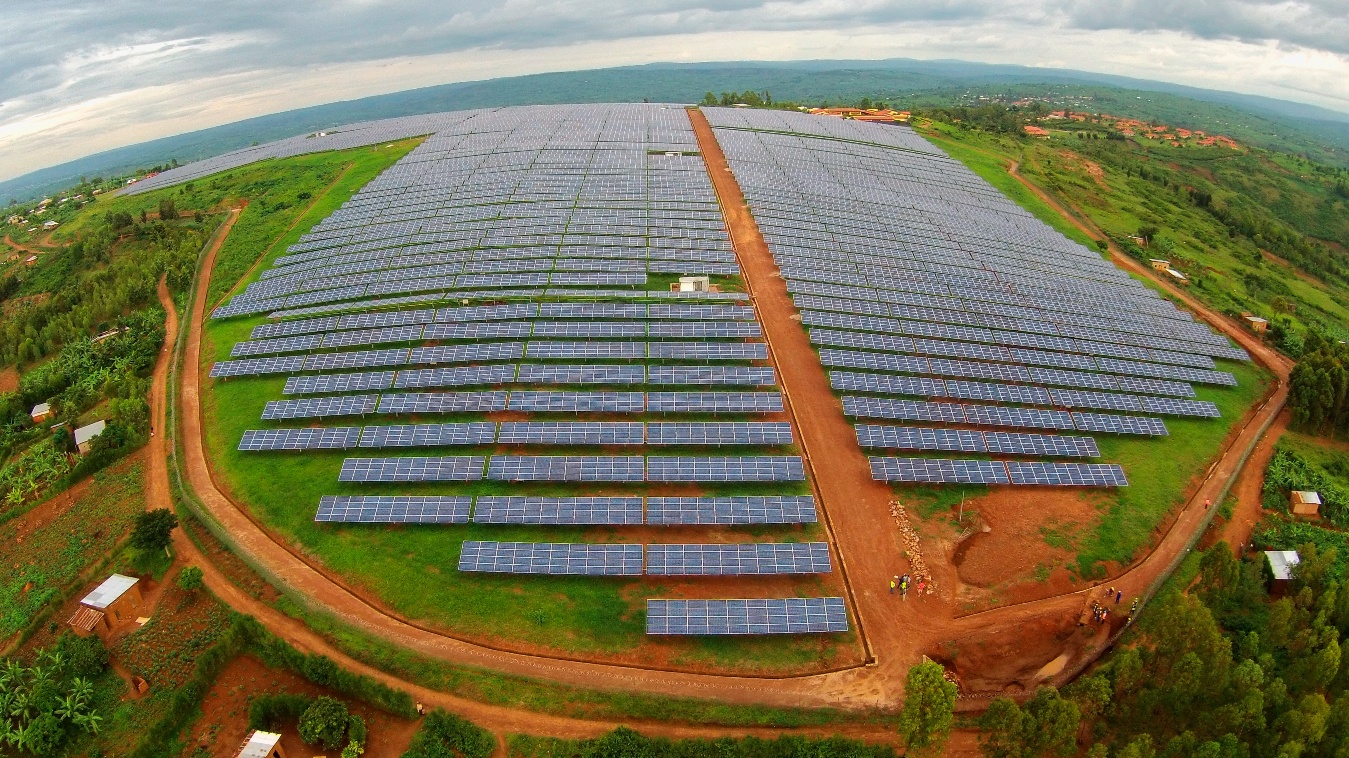How Rwanda is avoiding emissions, restoring communities, and improving livelihoods
July 25, 2016 by Grace Mwaura
During a recent visit to Rwanda, I learnt from three projects how the country is on a pathway to low-carbon development, building a socially resilient community of young people, and financing a green economy.
Solar Field
In Rwagamana, Eastern Rwanda, I visited the $24Million, 8.5MW solar field, the first utility-scale, grid-connected, commercial solar field in East Africa that has increased Rwanda’s energy generation capacity by 5% and is avoiding 8,000 tons of CO2 per annum. This has enabled the country to expand its rural electrification programme, resulting in new direct and indirect jobs and overall improved livelihoods. Subsequently, the solar energy makes a significant contribution to Rwanda’s Energy Sector Strategic Plan (ESSP) that sets out to increase the nation’s energy to over 560MW by 2018 meeting 70% of the demand while also avoiding emissions from energy production.
 Rwanda’s Solar Field. Source: Gigawatts
Rwanda’s Solar Field. Source: Gigawatts
Agahozo-Shalom Youth Village
The solar field is set on a 20-hectare piece of land leased from the Israeli-inspired Agahozo-Shalom Youth Village. Besides embracing the principles of sustainable communities, such as those in the US and South Africa, the village was established to offer a family-like community that restores the lives of vulnerable Rwandan youth. They follow the philosophy of tikkun halev, Hebrew for “repairing the heart” and tikkun olam, Hebrew for “repairing the world.” While the solar field runs as a private entity managed by Scatec Solar, land lease revenues provide essential resources to the youth village, enabling them to run activities that restore and give hope to the 500 young people living there. Furthermore, the field created over 300 informal jobs in its construction and maintenance. The youth village is itself an exemplar of how multisolving works. Based on the philosophy of repairing the heart and the world, I observed several multiple benefits at the village:-
- The combination of formal and informal education offers young people diverse career trajectories and creates new learning opportunities;
- The village produces almost 100% of its food and sells the surplus, demonstrating to the local community the benefits of local food production and sustainable agriculture;
- The young people’s involvement in community projects improves their livelihoods, while also keeping the young people connected to these communities where they will eventually return;
- Land lease revenues finance the village, while the solar field is exposing the village and the surrounding community to the global community as people from different parts of the world visit;
- The community living in the village is restoring the emotional well-being of the young people and giving them hope for the future.
FONERWA
The same intersectionality is enshrined in Rwanda’s Fund for the Environment and Climate Change (FONERWA), a fund created to finance climate resilience and sustainable development in Rwanda. The multi-million dollar and multi-stakeholder fund invests in public and private projects that align with Rwanda’s commitment to economic growth while increasing resilience and mitigating climate change. Already the Fund is benefitting thousands of Rwandans, and aims by 2020 to mobilize international and domestic capital commitments of $500M, create 50,000 green jobs, while avoiding 10,000 tons of CO2 emissions.
[embed]https://www.flickr.com/photos/127716409@N05/24818317403/
One of the projects funded through FONERWA finances rooftop rainwater harvesting in Eastern Province, supplying clean water to rural households while also mitigating flooding and related water-borne diseases. In Southern Province, a $2.8 million project is being implemented to protect the Akanyaru Watershed, through terracing and tree planting that reduce soil erosion and landslides, thus increasing climate resilience. The thousands of people employed by this project are facilitated to form cooperatives through which they can purchase livestock, biogas, health insurance, and start small rural enterprises. The project has in turn resulted in 5,000 of hectares planted with trees, and 300M3 of community water harvesting tanks, 4,000 terraces developed as well as the indirect benefits of environmental restoration.
Mitigating climate change, building resilience, and improving livelihoods are the immediate solutions we can observe from these three projects. However, importantly, the underlying success of the solar field, the youth village, and the Green Fund is observed in the strong partnerships developed between the different stakeholders involved. The initiatives are all reliant on strong public private partnerships locally, nationally and internationally from the point of inception to implementation and evaluation of the projects.

